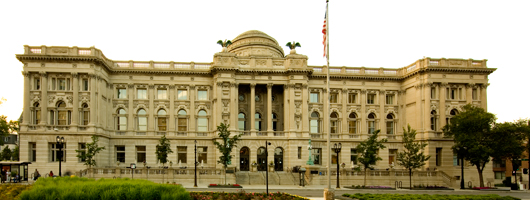
Central

Every day people of all ages visit the Central Library.
They conduct research for work and school, browse the shelves for classics and bestsellers, and use computers to access information from the other side of town and the other side of the world—all with the assistance of knowledgeable and helpful staff.
The vast collections of the Central Library are used not only by the downtown population, but by the whole city and the greater Milwaukee area. Central Library also serves as a resource library for the state.
In addition, Central Library is the administrative headquarters for the Milwaukee Public Library system. This system also meets the needs of Milwaukee’s neighborhoods through 12 branch libraries and the community outreach van.
The Milwaukee Public Library collection includes more than 2.7 million books and other materials such as magazines, newspapers, records, cassettes, compact disks and videos as well as more than 1.5 million government documents. The library system also provides customers with access to information through a wide array of computer resources.
Tour Historic Central Library
Free public tours are available on Saturdays at 11 a.m. Tours begin in the rotunda. Use of the rotunda requires a reservation for group gatherings or personal photography and video appointments. For commercial use, please see our photography/video request page.
Both Milwaukee visitors and area residents interested in a taste of Milwaukee's culture are invited to tour the past and present glory of the Central Library with the Friends of Milwaukee Public Library.
The Milwaukee Public Library was founded in 1878. After several moves, the Central Library was built in response to the need for more spacious quarters. It opened its doors to the public on October 3, 1898.
The original structure is a combination of French and Italian Renaissance styles built of Bedford limestone. Several additions help make up the block-long building that stands today. Central Library has been designated a landmark by the Milwaukee Historic Preservation Commission and is listed on the National Register of Historic Places. Read more about the Central Library.